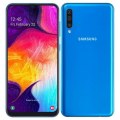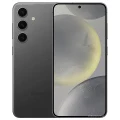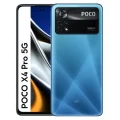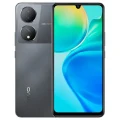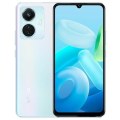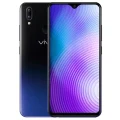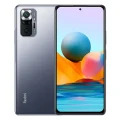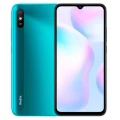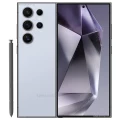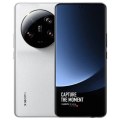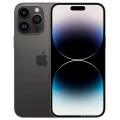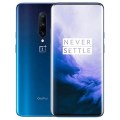- Awesome page
- Latest Mobile
- Smartphones
- Samsung Galaxy S9
Samsung Galaxy S9
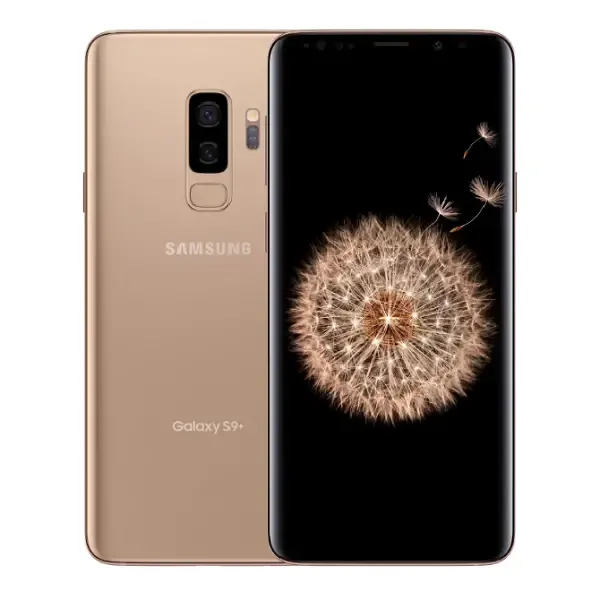


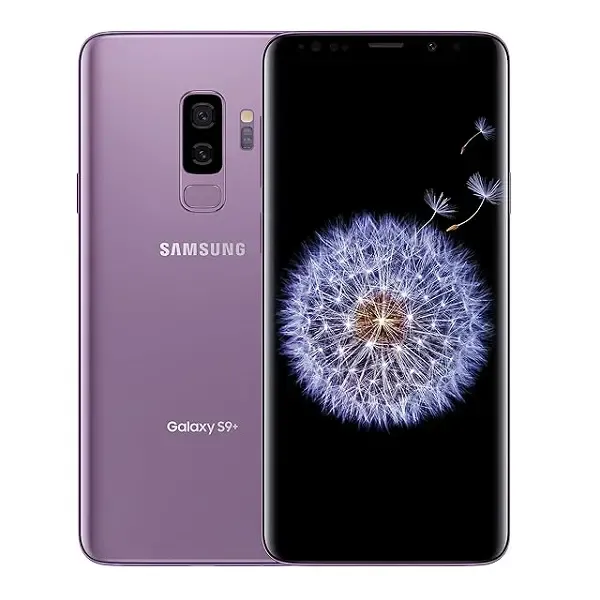
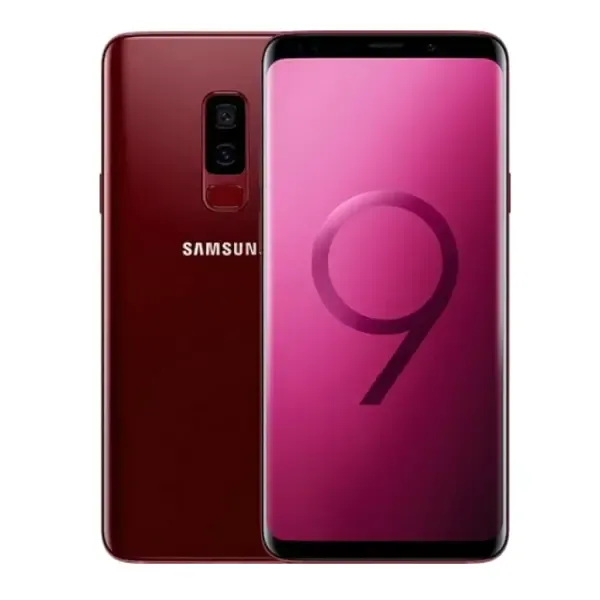
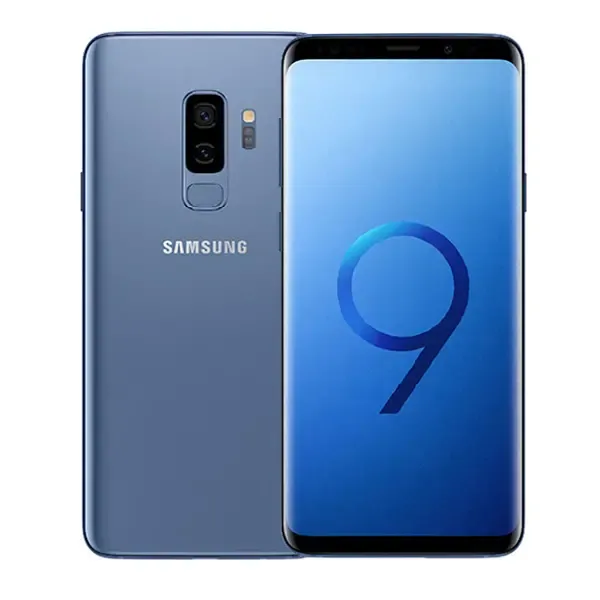
Samsung Galaxy S9 Price in Bangladesh
The price of the Samsung Galaxy S9 in Bangladesh is BDT 90,990. This 4G dual SIM smartphone is available in stunning colors like Midnight Black, Coral Blue, Titanium Gray, Lilac Purple, Burgundy Red, and Sunrise Gold. It features a 5.8-inch Super AMOLED display and is powered by a 2.7 GHz Octa-Core processor. Packed with 4GB RAM and 64/128/256GB ROM, its storage can be expanded up to 512GB via external storage. The Galaxy S9 boasts a dual 12 MP rear camera and an 8 MP front camera. It is powered by a 3000mAh non-removable battery with USB Type-C and wireless fast charging support.
Specifications
General
| Model | Samsung Galaxy S9 |
| Status | Available |
| Official price | 90990 |
Design
| Dimensions | 147.7 x 68.7 x 8.5 mm (5.81 x 2.70 x 0.33 in) |
| Weight | 163 g (5.75 oz) |
| Colors |
Midnight Black, Coral Blue, Titanium Gray, Lilac Purple, Burgundy Red, Sunrise Gold |
Network
| Technology | GSM / CDMA / HSPA / EVDO / LTE |
| 2G Network |
GSM 850 / 900 / 1800 / 1900 - SIM 1 & SIM 2 (dual-SIM model only) CDMA 800 / 1900 - USA |
| 3G Network |
HSDPA 850 / 900 / 1700(AWS) / 1900 / 2100 - Global, USA CDMA2000 1xEV-DO - USA |
| 4G Network |
LTE band 1(2100), 2(1900), 3(1800), 4(1700/2100), 5(850), 7(2600), 8(900), 12(700), 13(700), 17(700), 18(800), 19(800), 20(800), 25(1900), 26(850), 28(700), 32(1500), 38(2600), 39(1900), 40(2300), 41(2500), 66(1700/2100) - Global LTE band 1(2100), 2(1900), 3(1800), 4(1700/2100), 5(850), 7(2600), 8(900), 12(700), 13(700), 14(700), 17(700), 18(800), 19(800), 20(800), 25(1900), 26(850), 28(700), 29(700), 30(2300), 38(2600), 39(1900), 40(2300), 41(2500), 46, 66(1700/2100), 71(600) - USA |
| GPRS <strong>GPRS</strong> (General Packet Radio Service) is a packet oriented mobile data service on the 2G and 3G cellular communication system's global system for mobile communications (GSM), Generally, GPRS is used for the purpose of wireless data transfer, such as sharing pictures and videos or browsing the Internet via a mobile phone connection. | |
| EDGE <strong>EDGE</strong> (Enhanced Data GSM Environment) is a wireless network technology generally considered the next step in the 2G network offers data transfer rates up to four times faster than ordinary GSM networks, Generally, EDGE is used for the purpose of wireless data transfer, such as sharing pictures and videos or browsing the Internet via a mobile phone connection. | |
| Speed | HSPA 42.2/5.76 Mbps, LTE-A (6CA) Cat18 1200/200 Mbps |
Display
| Display Type <strong>Display Technology => </strong> A number of display technologies and types used in mobile phones => TFT (Thin Film Transistor), IPS (In-Place Switching), OLED (Organic Light Emitting Diode), AMOLED (Active-Matrix Organic Light-Emitting Diode), Super AMOLED (an even advanced version of AMOLED), Resistive Touchscreen (Resistive touchscreens contain two layer of conductive material with a very small gap between them which acts as a resistance), Capacitive Touchsceen (Capacitive touchscreen technology consists of a layer of glass coated with a transparent conductor) | Super AMOLED capacitive touchscreen, 16M colors |
| Size | 5.8 inches, 84.8 cm2 (~83.6% screen-to-body ratio) |
| Resolution | 1440 x 2960 pixels, 18.5:9 ratio (~570 ppi density) |
| Features |
Other Features - Samsung DeX (desktop experience support) - Fast battery charging (Quick Charge 2.0) - Qi/PMA wireless charging (market dependent) - ANT+ support - Bixby natural language commands and dictation - MP4/DivX/XviD/H.265 player - MP3/WAV/eAAC+/FLAC player - Photo/video editor - Document editor |
Camera
Main camera
| Camera Setup | Single |
| Primary <strong>Camera</strong> is able to capture photographs and usually videos, The most important characteristics of a camera are the resolution (measured in megapixels), lens focus type (fixed or automatic), higher megapixel cameras are known to capture higher quality photos, but not always a good measurement of the photos quality. |
12 MP, f/1.5-2.4, 26mm (wide), 1/2.55&quot;, 1.4µm, OIS, dual pixel PDAF |
| Features |
LED flash, auto-HDR, panorama |
| Video | 2160p@60fps, 1080p@240fps, 720p@960fps, HDR, dual-video rec. |
Selfie camera
| Camera Setup | Single |
| Primary <strong>Camera</strong> is able to capture photographs and usually videos, The most important characteristics of a camera are the resolution (measured in megapixels), lens focus type (fixed or automatic), higher megapixel cameras are known to capture higher quality photos, but not always a good measurement of the photos quality. |
8 MP, f/1.7, 25mm (wide), 1/3.6&quot;, 1.22µm, AF |
Hardware
| Chipset <strong>Chipset</strong> is a group of integrated circuits designed to perform one or a more dedicated functions, often with real time computing constraints, Popular smartphones are equipped with more advanced embedded chipsets that can do many different tasks depending on their programming. | Exynos 9810 Octa (10 nm) - EMEA Qualcomm SDM845 Snapdragon 845 (10 nm) - USA/LATAM, China |
| CPU <strong>CPU</strong> (Central Processing Unit) mostly known as processors, CPU processes instructions in order to carry out certain functions that make your device operate properly. Processors are often described as the brain of computers, smartphones and tablets, Smartphones and tablets rely on processors to carry out their every task, Processors are an incredibly important factor in selecting any type of computing device, including your smartphone. | Octa-core (4x2.7 GHz Mongoose M3 & 4x1.8 GHz Cortex-A55) - EMEA Octa-core (4x2.8 GHz Kryo 385 Gold & 4x1.7 GHz Kryo 385 Silver) - USA/LATAM, China |
| GPU <strong>GPU</strong> (Graphics Processing Unit) is a single-chip processor designed to rapidly manipulate and alter memory to accelerate the creation of images in a frame buffer intended for output to a display, This includes things such as lighting effects, object transformations, and 3D motion. | Mali-G72 MP18 - EMEA Adreno 630 - USA/LATAM, China |
| RAM (Memory) <strong>RAM</strong> (Random Access Memory) is a type of computer memory that can be accessed randomly, any byte of memory can be accessed without touching the preceding bytes that allows information to be stored and accessed quickly from random locations. RAM is the most common type of memory found in computer systems, smartphones, tablets and other electronic devices. | 4 GB RAM |
| Internal Storage <strong>Internal Storage</strong> is a data storage space (flash memory) mostly used in smartphones, tablets and other electronic devices where operating system, apps, music, photos, videos, files and other user data Is stored. | 64/128/256 GB |
| Sensors <strong>Sensors</strong> are electronic components that detects and responds to some type of input from the physical environment. The specific input could be light, heat, motion, moisture, pressure and location, The output is generally a signal that is converted to use in computing systems, a location sensor, such as a GPS receiver is able to detect current location of your electronic device. |
Iris scanner, fingerprint (rear-mounted), accelerometer, gyro, proximity, compass, barometer, heart rate, SpO2 |
Connectivity
| Bluetooth <strong>Bluetooth</strong> is a wireless communications technology for exchanging data between mobile phones, headsets, computers and other network devices over short distances without wires, Bluetooth technology was primarily designed to support simple wireless networking of personal consumer devices. | 5.0, A2DP, LE, aptX |
| Infrared <strong>Infrared</strong> connectivity is an old wireless technology used to connect two electronic devices. It uses a beam of infrared light to transmit information and so requires direct line of sight and operates only at close range. | |
| USB | 3.1, Type-C 1.0 reversible connector |
| GPS <strong>GPS</strong> The Global Positioning System is a satellite-based radio navigation system, GPS permits users to determine their position, velocity and the time 24 hours a day, in all weather, anywhere in the world, In order to locate your position, your device or GPS receiver must have a clear view of the sky. | Yes, with A-GPS, GLONASS, BDS, GALILEO |
| NFC <strong>NFC</strong> (Near field communication) is a set of standards for smartphones and similar devices to establish peer-to-peer radio communications with each other by touching them together or bringing them into proximity, usually no more than a few inches. |
Battery
| Battery Type <strong>Battery Type => </strong> Cell phones run on various kinds of batteries depending on the manufacturer, phone size or shape and features. There are basically four types of cell phone batteries => Lithium Polymer, Lithium Ion, Nickel Metal Hydride and Nickel Cadmium. | Non-Removable Li-Po |
| Capacity <strong>Battery Capacity</strong> is a measure (typically in Amp-hr) of the charge stored by the battery, and is determined by the mass of active material contained in the battery. The battery capacity represents the maximum amount of energy that can be extracted from the battery under certain conditions. | 3000 mAh battery (11.55 Wh) |
Samsung Galaxy S9 Review: Is It Still Worth Your Time?
The Samsung Galaxy S series has long been a benchmark in the smartphone industry, known for delivering cutting-edge innovation and unparalleled performance. With each release, Samsung succeeds in raising the bar, and the Galaxy S9 is no exception. Eagerly anticipated at its launch, the S9 promised to redefine user experiences with improved design, camera capabilities, and unique features. But does it still hold up today among the competition? This review dives deep into the Galaxy S9 to explore its design, camera, performance, and overall functionality so you can decide if it’s worth your investment in 2024.
Striking Design and Mesmerizing Display
When it comes to smartphone design, the Galaxy S9 continues Samsung’s legacy of crafting visually stunning devices. Built with premium materials, it combines a sleek glass back with an aluminum frame, offering a feel that’s undeniably high-end. Whether you choose Midnight Black, Coral Blue, Titanium Gray, Lilac Purple, Burgundy Red, or Sunrise Gold, the S9 makes a bold style statement.
One of the standout features is its 5.8-inch Super AMOLED Infinity Display. Samsung’s Infinity Display technology extends the screen to the edges of the device, creating an almost bezel-free experience. With a resolution of 1440 x 2960 pixels (QHD+), the S9 provides crisp visuals, vibrant colors, and deep blacks that set new standards for smartphone displays. Watching videos, scrolling through photos, or gaming on this screen feels truly immersive, making it one of its biggest selling points.
Camera and Photography Prowess
Samsung made a big deal about the Galaxy S9’s improved camera system, and for good reason. It features dual 12 MP rear cameras with a variable aperture that can switch between f/1.5 for low-light conditions and f/2.4 for daylight. This allows for crisper photos, even when lighting is poor. Whether you’re capturing a sunset or snapping photos at a dimly lit restaurant, the S9’s camera never fails to impress.
The phone also introduced Super Slow-mo video recording, which lets users capture moments at an astonishing 960 frames per second. This feature stands out for those who enjoy creating dynamic, cinematic content. Additionally, the 8 MP front-facing camera ensures selfies come out sharp and detailed, thanks to intelligent enhancements.
Tied to these improvements is Samsung’s AI-driven camera functionality. Features such as scene optimization and defect detection help take the guesswork out of photography, so you get a perfect shot almost every time.
Performance and Battery Life
Under the hood, the Galaxy S9 is powered by a 2.7 GHz Octa-Core processor, paired with 4 GB of RAM. Whether you’re multitasking between apps, streaming videos, or playing high-end games, the S9 delivers smooth performance. It comes in three storage options—64 GB, 128 GB, and 256 GB—with expandable storage of up to 512 GB, thanks to a microSD slot.
Battery life, while decent, may fall slightly short of expectations in intense daily use. The device houses a 3,000 mAh non-removable battery, which supports fast charging via USB Type-C and wireless charging. For moderate use, the battery easily lasts a full day, but heavy users may need to recharge sooner.
Features and Innovations
What truly sets the Galaxy S9 apart from its competitors are its unique features. These innovations include:
AR Emoji
Samsung’s take on Apple’s Animoji, AR Emoji allows users to create personalized emojis based on their facial features. While the execution isn’t perfect, it’s a fun feature for those who enjoy adding a creative touch to their messages.
Bixby Personal Assistant
The inclusion of Bixby offers users hands-free navigation, voice commands, and real-time translation capabilities via the camera. Though not as polished as Google Assistant or Amazon Alexa, it brings a host of smart functionalities that add value to the user experience.
DeX Pad for Desktop Experience
Transform your Galaxy S9 into a desktop-like workstation using the DeX Pad. By connecting the device to an external monitor, you can run apps, edit documents, and even multitask with a keyboard and mouse. This feature is a boon for professionals seeking an on-the-go PC substitute.
User Reviews and Community Feedback
The Galaxy S9 received widespread acclaim from tech reviewers and regular users alike. Users praise the phone’s stunning display, camera quality, and overall performance, noting that these features hold up even years after its initial release. However, some users point out the battery life as a minor drawback, especially when compared to newer smartphones with larger capacities.
Here’s what some users have had to say:
- Steve from New York: “The camera is phenomenal. I’ve taken some of the best night shots with this phone!”
- Priya from Bangalore: “While the battery could be better, the user experience and smooth performance more than make up for it.”
- Alex from Berlin: “Love the design and feel of the Galaxy S9. Samsung nailed it when it comes to aesthetics.”
Is the Galaxy S9 Worth It in 2024?
The Samsung Galaxy S9 remains a solid smartphone option, especially for those who value premium design, top-notch display quality, and advanced camera features. While it may not compete directly with today’s flagships in terms of battery life or processing power, it’s still a capable device for everyday tasks and photography enthusiasts.
If you’re looking for an all-rounder that doesn’t skimp on style or performance—and don’t mind the modest battery life—the Galaxy S9, priced at BDT 70,900, offers tremendous value. For professionals who could benefit from features like DeX Pad or for photography lovers excited to explore creative avenues like Super Slow-mo, the S9 remains a recommended pick.
Final Recommendation
While Samsung has launched newer, more powerful models, the Galaxy S9 still holds its place as a reliable and stylish option for everyday needs. Whether you’re a tech enthusiast, casual user, or die-hard Samsung fan, this device won’t disappoint in terms of design, camera capabilities, and daily performance.
Looking to migrate to the Galaxy series for the first time? There are plenty of tutorials, reviews, and user guides to help you unlock the full potential of this phone. Start exploring today!

